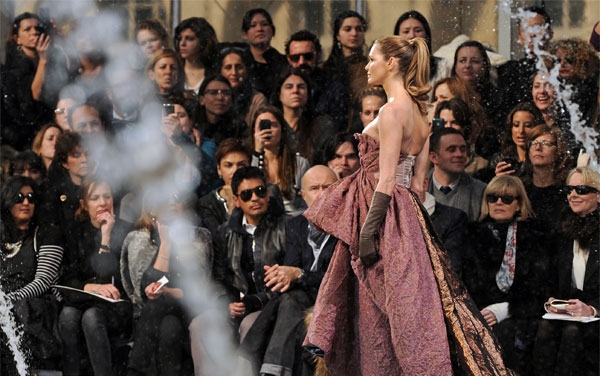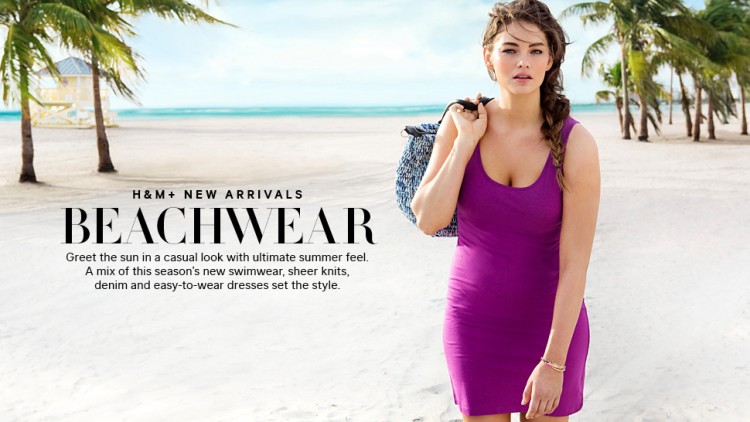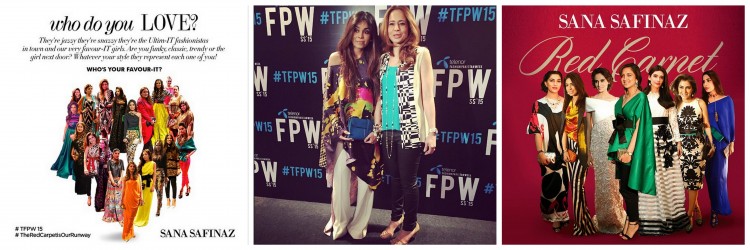The international scene has almost always been in the limelight of cultural representations that homogenize and normalize practices such as cosmetic surgery, obsessive dieting and physical training. There are vehement arguments and lawsuit cases filed against the International Fashion Council, allegedly claiming that their falsely created idea of ‘ideal body type’ is pushing young girls over the edge to develop eating disorders, body dysmorphia and acute cases of bulimia.
There is an underlying horrifying truth about having naturally skinny models who merely serve as “moving coat-hangers” as quoted by Vera Wang and international fashion magazines are dominated by pictures that are heavily photoshopped and airbrushed. Thankfully, the international fashion scene realizes the threat has been taking serious actions to bat away the criticism.
In February 2010, conciliatory measures were evident in the Louis Vuitton show, titled “And God Created Woman” where the label casted curvaceous older models such as 46-year-old Elle MacPherson and 31-year-old Laetitia Casta in starring roles on the Paris catwalk alongside other models. A year prior to that, Mark Fast also used Morley and other plus-size models in his London Fashion Week show; both done in an attempt to bust the myth regarding size zero models.

Likewise, high-fashion magazines like the Vogue, Elle, Harper’s Bazaar and Sports Illustrated took drastic measures. In July 2014, French Vogue editor, Franca Sozzani featured not just one but three curvy beauties on their ‘Real Beauties’ cover. Three plus-size models and one style blogger also recreated the cover of the Sports Illustrated swimsuit issue. With the plus-size market of over $17.5 billion dollars, now more than 70% brands such as Harlow, Macys, Forever21, H&M, Target, Old Navy, Dorothy Perkins and even fantasy promoting brands like Victoria Secrets are catering to body sizes other than just zero.

Interestingly enough, in a society like ours voluptuousness is deemed as a sign of good health and fortune. A buxom figure adds to the sexual appeal and is appreciated. No matter how many detox-plans or 42-day challenges emerge, a conventional, average sub-continental woman is taught to own her broad-body structure and a curvaceous figure.
Talking to SiddySays about Plus-size clothing and clientele, Sehr Pirzada of Sana Safinaz also notes that, “We understand that an average Pakistani women is quite different from the internationally shared idea of body-proportion. We’re heavier on our busts and hips, and so our label, Sana Safinaz has always aimed for silhouettes that suit this frame perfectly.”
We see, that unlike the western societies where certain fashion-brands either flat-out refuse to cater to plus-sizes or the women themselves feel marginalized and shameful at buying dresses that are over size 6, Pakistani fashion-retailers are seemingly conscious of such plus-size sales. In an attempt to gather statistics for Pakistani plus-size market, we observed that famous retail brands such as Sapphire, Generations, Ego and Damaan all stock tunics ranging from extra-small to extra-large sizes. In terms of salability and demand, we are told that the ratio is equal, but mostly varies from design to design.
“You see, Sania Maskatiya caters to almost all shapes and sizes, ” shares Umair Tabani of Sania Maskatiya, “we have demand coming in from extra-small to extra large customers. They feel quite comfortable coming in and buying a tunic that fits them, regardless of size-shaming.”
At Sana Safinaz, a slightly tweaked version of this retail-rule is followed. “As far as our retail go, we have certain tunic prints that range from small to large size, but we do have certain styles that will not be available in small sizes or large sizes. This is simply because the design team at Sana Safinas knows that there are certain styles that won’t flatter a slightly bulkier or petite body structure, “ claims Pirzada.
“In our Spring/Summer’15 lawn collection too, we tried to keep less print on dupatta and pants because we wanted our design to compliment with the average Pakistani women’s figure, “ Pirzada explains eagerly. We see that by keeping the basic design centered round the neck and the daman, the attention is diverted away from a bulging or an untoned belly, making the design flatter a bosomy, unproportional figure.
In luxury prêt-à–porter “we get orders from brides that are plus size. Or orders from clients who’d wish to get the runway collection altered to their size. Most of the demand is for our capes these days from PSFW’15” Says Pirzada. She explains that Sana Safinaz endeavors to have gowns and semi-formals that are gathered and tucked around the top and falls in loose, rumpled luxury near the bottom. Their design philosophy deals with silhouettes that are shirred-waisted and paired with body-skimming layers of swoop-back twill.

Tabani also seconds this claim. He says, that “our Luxury prêt-à-porter and bridal wear are already made-to-order. We always come across women who are of all sizes, and we cater to them all the same.”
So where exactly does the Pakistani-plus size market stand? What do our plus-size women prefer? Is there a stark contrast between getting an unstitched fabric as opposed to prêt-wear? Do broad-structured women here find it more comforting to have their tailors work the magic?
When asked, a plus sized customer on condition of anonymity lashed out at the lack of options in ready to wear retail for women over size 12. ‘You have to plan your clothes in advance, walking into a store and walking out with something you like is almost nearly impossible. The choices might also be limited abroad too but at least there are stores dedicated to serving this size range’.
While luxury prêt-à–porter pretty much remains ‘made to order’ (err?!?) for all brands, there has been a significant increase in the number of ‘ready to wear’ casuals. As this segment evidently gains steady momentum, the mass market retailers will need to take note of this size bracket specifically designing for these body types rather than just introducing size ranges where possible in their existing portfolios. Who launches Pakistan’s first plus size brand, only time will tell.




